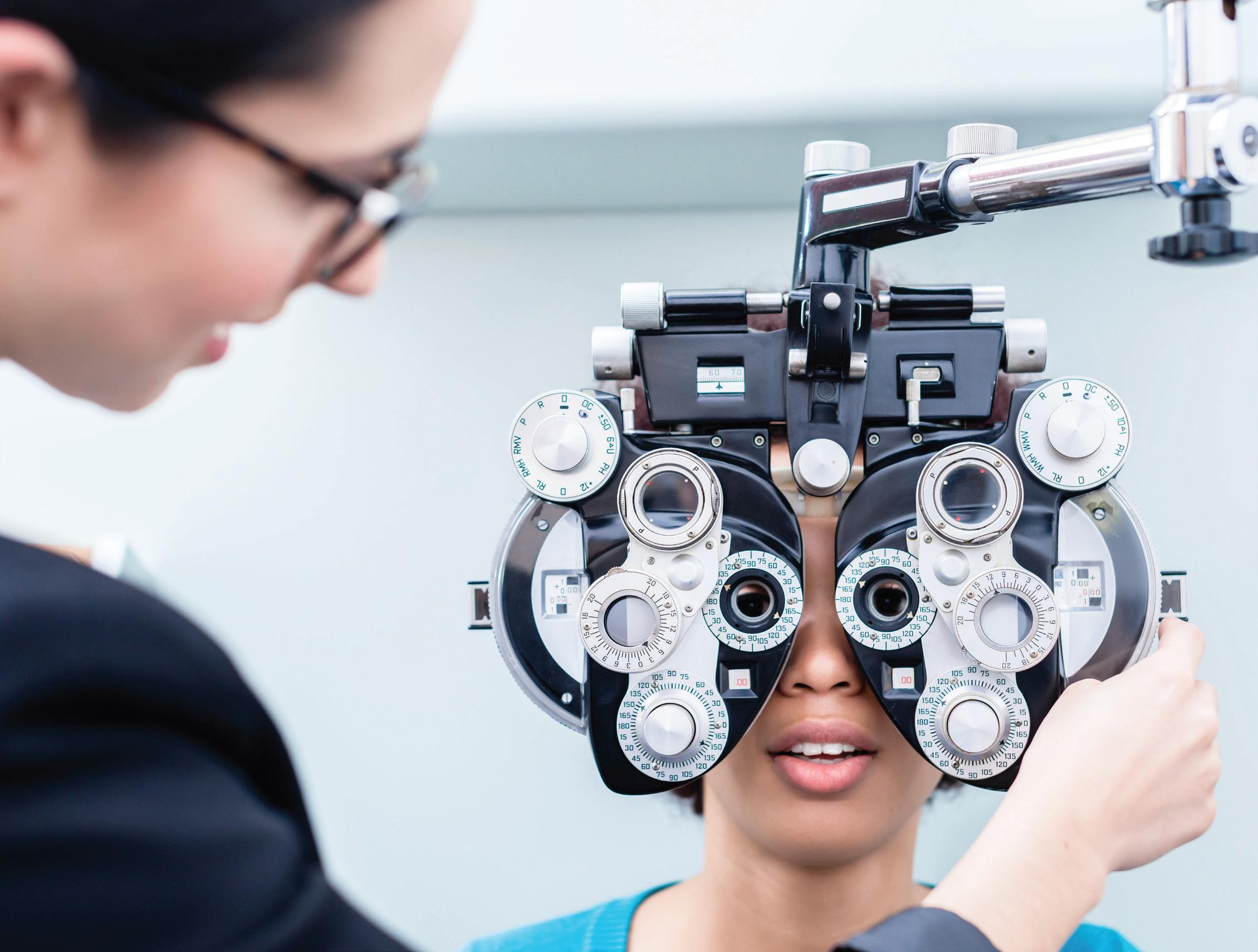
1 minute read
What is a Refraction?
When a refraction is performed, an instrument called a phoropter is placed in front of your eyes and various lens combinations are shown until the clearest vision is obtained. Refractions are usually performed by trained technicians. Your doctor reviews your refraction and makes recommendations. You will either require no vision correction or be categorized as myopic, hyperopic, astigmatic, or presbyopic. If you complain of blurred vision, a refraction will be performed.
The following are the most common conditions that would require you to wear glasses or contact lenses. Some of these, these conditions can also be treated by LASIK or other refractive surgical procedures.
Advertisement
• Myopia, also referred to a nearsightedness or shortsightedness, is the condition of having blurred distance vision.
• Hyperopia, also called farsightedness, refers to blurred vision at distance, near, or both, depending on a patient’s age.
• Astigmatism is an asymmetric curvature of the cornea on the outside of the eye or crystalline lens on the inside of the eye that can cause blurred vision at both distance and near. This is often described as a “football-shaped” eye and is usually found in conjunction with nearsightedness or farsightedness.
• Presbyopia is characterized by blurred vision up close and is caused by aging.
If you require contact lenses and glasses, many options are available. Refer to the Optical portion of this booklet or speak to your optician after your exam.









